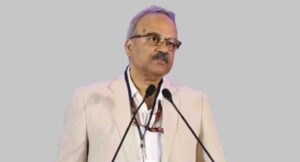Tackling the issue of sub-standard drugs, supporting small and medium-sized drug manufacturers, and aligning the medical device vertical are the priority areas for India’s apex drug regulator, the Drugs Controller General of India (DCGI), who has been granted an extension of his tenure on a contractual basis.
“DCGI Rajeev Singh Raghuvanshi has been given the mandate to work on weeding out quality issues along with upgrading standards at small manufacturing sites by giving support to MSME drug-makers and seamlessly adding medical devices vertical into CDSCO which is only known for handling drugs so far,” said a senior official requesting anonymity.
“The ministry is satisfied with his performance as he has been able to drastically improve the manufacturing quality of drugs via risk-based inspections. His zero-tolerance approach has created an environment of fear. Based on the same, renewed responsibilities have been given till the time we find the appropriate candidate.”
Despite some concerns, the appointments committee of the cabinet has approved the proposal of the department of health and family welfare for the re-employment of Raghuvanshi as drugs controller, Central Drugs Standard Control Organisation (CDSCO), on a contract basis for one year starting March 1.
He has been given the charge “…beyond his attaining the age of superannuation or till the appointment of the regular incumbent to the post, or until further orders, whichever is the earliest…”
The announcement specifically mentions that the decision has been taken “…by keeping the recruitment rules of the post in abeyance”.
Wipe out sub-standard drugs
India has been battling the issue of sub-standard or not-of-standard quality drugs (NSQs). Last year, in September, top pharmaceutical companies indicated that spurious drugs are to blame after the antacid Pan D, calcium supplement Shelcal, anti-diabetic drug Glimepiride, high blood pressure drug Telmisartan and many more biggest-selling medicines were flagged for failing quality tests in the monthly drug alert released by the country’s drug regulation watchdog CDSCO.
Pharma companies had approached CDSCO to change the pattern of alert announcements due to the high chances of spurious drug failures instead of original drugs. In fact, India’s largest lobby of domestic drug-makers, the Indian Pharmaceutical Alliance (IPA), said that the lobby will collaborate with the government to strengthen regulations against counterfeit products to protect public health and India’s global standing.
Falsified medicines are not only a domestic concern but also a global issue. In 2019, the ‘Special 301 Report’ released by the Office of the United States Trade Representative (USTR) blamed India for its growing problem of counterfeit medicines.
It said that almost 20 per cent of all pharmaceutical goods sold in the Indian market are counterfeit. Hence, the drug regulator needs to strengthen its monitoring mechanism to solve the issue of spurious drugs in India.
According to Sudarshan Jain, Secretary General of the Indian Pharmaceutical Alliance (IPA), three priority areas that DCGI must look into immediately include, “implementation of Schedule M and Move to PIC/S (Pharmaceutical Inspection Co-operation Scheme (PIC/S) standards, management of counterfeit drugs and regulatory simplifications with thrust on simplifying new product processes”.
Handholding MSME firms
Hit by risk-based inspections (RBI), micro, small and medium enterprises (MSMEs) are feeling the heat. The Union government has mandated the need to upgrade facilities to follow Schedule M, making manufacturing standards on par with WHO-Good Manufacturing Practices (GMP).
The move was aimed to retain the confidence of global health regulators in made-in-India medicines. However, these drug-makers have asked the government to extend hand-holding in the form of financial and technical support to improve quality standards.
“We need the government to help and guide us to upgrade our facilities. Also, they should understand that we are not earning in crores. So many of us won’t have the budget to upgrade our factories. We have requested the government not to treat us as criminals but as small businessmen who need help to make our factories on par with global standards,” said an officer of the MSME industry.
Overall, once the drug-makers are upgraded to follow global standards, India’s reputation in the global arena will be enhanced along with trust in Indian medicines, leading to a jump in exports of pharmaceutical products and creating a win-win situation for both the government and the drug-makers.
Syncing Medical Devices With Drugs
To bring regulatory uniformity in medical devices, the government is working to classify around 1,178 medical devices into four categories based on their risk approach.
Till now, medical devices were treated on par with drugs, which was unfair. However, the drug regulator is revising the existing list of medical devices and classifying them into four categories—interventional radiology, radiology therapy, oncology and a newly introduced category named class A non-sterile and non-measuring medical devices.
Presently, the medical device industry is already simmering with discontent and asking for a “predictable regulatory environment”.
“Industry cannot be invited to invest in a state of chaos, yesterday- today- tomorrow- every day a new confusion will not build confidence, so we need a predictable regulatory and policy environment where we are not challenged by arbitrary demands of NoCs (no-objection certificate) being sought or SLAs (state licensing authorities) insisting manufacturers to get written clarification from DCGI,” Rajiv Nath, forum Coordinator of Association of Indian Medical Device Industry (AIMED), said. News18









